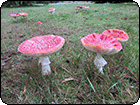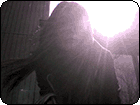 photo by splunge
photo by splunge
 photo by TheophileEscargot
photo by TheophileEscargot
 photo by Kronos_to_Earth
photo by Kronos_to_Earth
 photo by ethylene
photo by ethylene
Comment Feed:
♦ RSS
"Art Tatum was a consummate soloist, of course. But he made some fascinating records with other musicians here with Benny Carter and Louis Bellson. An easy ride into the theme by solo piano before the alto and fairly understated drums join in at the second chorus. Carter - finely-honed elegance with a smear of the blues in unexpected places, understated power one of the great alto players. Tatum takes up the game the usual trade-mark easy swing and virtuoso runs that disrupt and suspend it. A fairly sudden ending. Is this what they mean by 'timeless?' "
"These records are amongst the best Bix ever made. The ensemble drive of At the Jazz Band Ball is truly amazing. The rhythm section, as such, has been bettered many times, but there is no getting away from the general rhythm push of this little band, as a whole."
"...And in this swaggering "Tutu" - truly Miles' last laugh at his naysayers - we see the whole arc of the jazz tradition telescoped into one great rollicking blast. Recalling the great spontaneous collective improvisation - rolling along like a fired-up New Orleans front-line - that characterized Miles greatest ensembles, the baritone walks a funky line while searing barrelhouse solos are let loose over a deadly bed of polyrhythmic funk."
I started out with the cymbals and the bass drum and snare drum, but I wanted something that wasn’t hard to carry….